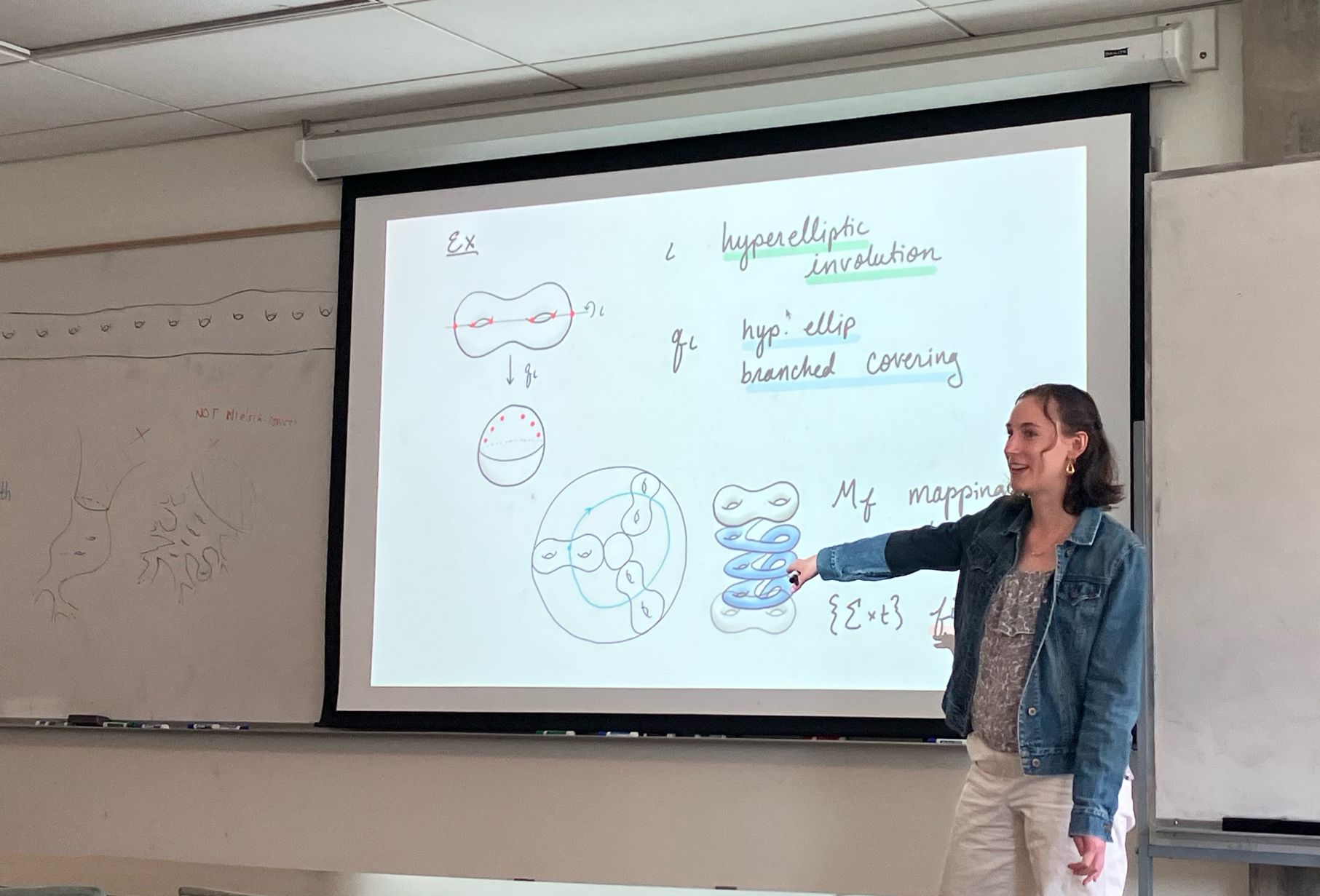Talks
I love giving talks and thinking about how to communicate mathematics! Here is a list of talks I have given in recent history.
-
Leafwise Branched Coverings of Foliated 3-Manifolds
May 2025; GTA: Philidelphia 2025; slides
Abstract: A foliation of a 3-manifold is a decomposition into a disjoint collection of surfaces so that it locally looks like a product R^2 × R. A well-loved example is a 3-manifold fibering over the circle (a mapping torus) where the fibers form the surfaces in the foliation. Such a foliation is taut: there is a closed circle transversely intersecting all the fibers. In a 2021 paper, Calegari gives a combinatorial proof that a taut foliation is equivalent to the existence of a leafwise branched covering. We examine the relationship between the monodromy of a mapping torus and the necessary complexity of this leafwise branched cover. We are interested in mapping tori of both finite and infinite type surfaces.
-
Modular Multiplication and Dancing Planets
May 2025; U Chicago Math Club; slides
Abstract: Modular multiplication tables are popular objects from recreational mathematics that display fascinating and varied designs. Take m points equally spaced around a circle, choose an integer multiplier a, and draw a chord from point p to a*p mod m. What pattern will appear as the envelope of the chords? We will investigate this question using dynamics, topology, coding, and crafting!
-
One circle to rule them all...
Feb 2025; Farb and Friends student seminar
Abstract: ... One circle to find them, One circle to bring them all and in the darkness bind them.
Given a two-dimensional foliation of a 3-manifold with hyperbolic leaves, the fundamental group π_1(M) has a natural action on a space of many circles. These are the circles at infinity of the leaves in the foliation of the universal cover of M. A universal circle binds these circles together and gives an action on a single circle instead. In this example-heavy talk, we will learn how to construct a universal circle for taut foliations and see how universal circles relate to modern research directions in 3-manifold topology. -
Realizing a Maximally Symmetric Surface
Oct 2024; U Chicago Math Club
Abstract: For a genus g surface with g at least 2, the Hurwitz Theorem places a strange upper bound on the number of possible symmetries: 84(g - 1). We will see why this theorem is true by learning about orbifolds and branched covering maps. Then we will study the Klein quartic, a maximally symmetric genus 3 surface. No prior knowledge of algebraic topology or hyperbolic geometry will be assumed, but we will see how these subjects play with each other to understand symmetry.